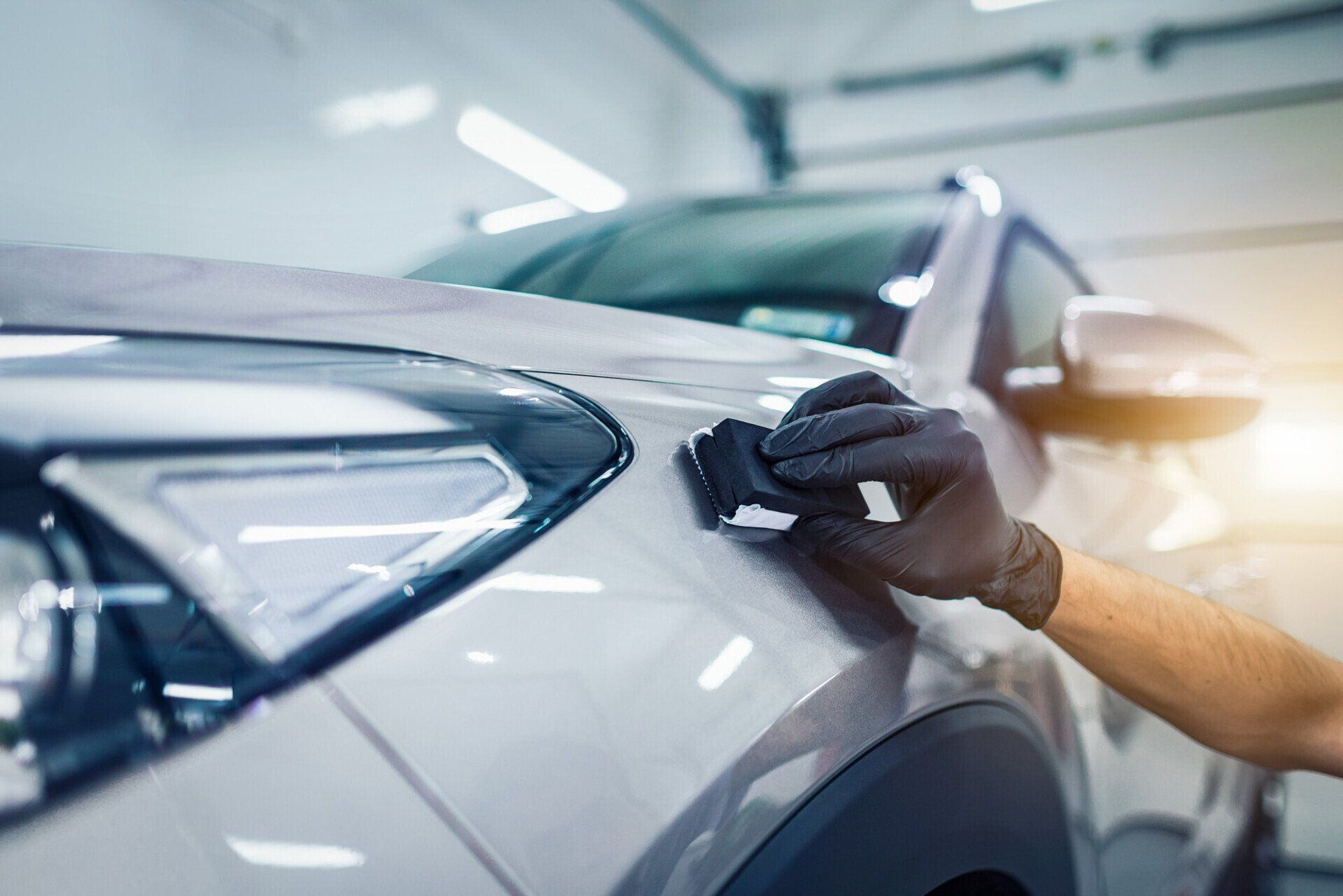Leading Ceramic Coatings San Jose Providers for Automotive Excellence
Leading Ceramic Coatings San Jose Providers for Automotive Excellence
Blog Article
Unveiling the Science Behind Ceramic Coatings: Just How Does It Work and Why Is It Above Standard Options?
Ceramic layers have been acquiring appeal in numerous sectors for their outstanding efficiency and toughness. Understanding how ceramic coverings job and why they outshine conventional options is essential for those seeking to boost the long life and durability of their products.
The Chemistry of Ceramic Coatings
In recognizing ceramic finishes, diving into the elaborate chemistry behind their composition is crucial for realizing their performance and sturdiness. Ceramic layers are mainly composed of silicon dioxide (SiO2), which creates a safety and strong layer when applied to numerous surface areas. This chemical structure gives phenomenal resistance to warmth, chemicals, and rust, making ceramic finishes extremely sought after for a vast variety of applications.
The chemistry behind ceramic finishings involves the development of covalent bonds in between silicon and oxygen atoms, creating a stiff network that enhances the finish's toughness and toughness. Additionally, the existence of various other elements such as zirconium, aluminum, and titanium more boosts the finishing's residential or commercial properties, using enhanced firmness and attachment to surfaces.
Recognizing the chemical structure of ceramic layers enables the customization of solutions to match specific requirements, whether it be for automobile, commercial, or residential objectives. By using the power of chemistry, ceramic coverings proceed to lead the way for superior security and performance in different markets.
Benefits of Ceramic Coatings

One more considerable benefit of ceramic coatings is their hydrophobic nature. This residential property creates water to bead up and roll off the coated surface area, bring dust and contaminants with it. As a result, ceramic finishings make cleaning and keeping surfaces a lot less complicated and less lengthy. Furthermore, ceramic finishes provide improved tint and gloss deepness, giving surface areas a glossy and vibrant look. On the whole, the plethora of benefits provided by ceramic coatings make them a remarkable alternative compared to traditional coating approaches.
How Ceramic Coatings Bond
Ceramic coatings bond to surface areas via a process that entails molecular attachment and chemical communications. When a ceramic finish is applied to a surface, it develops a solid bond by chemically sticking to the surface area at a molecular degree.
Additionally, the chemical communications between the ceramic finishing and the surface area better boost the bond. ceramic coatings san jose. These interactions allow the ceramic finish to develop a smooth and constant layer externally, providing superb defense and toughness. Unlike standard coverings that may rest on the surface area without completely bonding, ceramic finishings produce an irreversible bond that is immune to chemicals, UV rays, and severe environmental conditions

Essentially, the bonding mechanism of ceramic coverings makes certain a effective and durable protective layer that outperforms typical finish options. This premium bond contributes to the durability, scrape resistance, and long life of ceramic coverings, making them a recommended option for numerous applications.
Toughness of Ceramic Coatings
The remarkable longevity of ceramic finishes originates from their robust molecular bond and chemical communications with surface areas, guaranteeing a sturdy protective layer that goes beyond traditional finish alternatives. As soon as applied, ceramic coverings form a solid bond with the substratum, developing a resilient obstacle versus different ecological stressors such as UV radiation, chemicals, and abrasions. This bond is so safe and secure that it can endure the roughness of day-to-day use without deteriorating or deteriorating swiftly.
Unlike standard finishes that might degrade over time, ceramic coatings preserve their honesty for an extensive duration, giving durable defense for the underlying surface area. The solid molecular structure of ceramic layers resists chipping, fading, and peeling, making certain that the surface remains shielded and cosmetically pleasing for several years ahead. This durability not only reduces the demand for frequent additional reading reapplications yet also saves time and money in the future. Overall, the outstanding durability of ceramic layers makes them a remarkable choice for securing a large range of surfaces in various applications.
Ceramic Coatings Vs. Typical Alternatives
In comparison to conventional coating approaches, ceramic coatings offer an unique mix of sturdiness and protective abilities that establish them apart in numerous surface area security applications. Traditional options such as wax or sealers give a short-lived layer of defense that can subside promptly, needing regular reapplication. On the other hand, ceramic finishings develop a solid bond with the surface, producing a semi-permanent or long-term obstacle that is extremely immune to abrasion, chemicals, UV rays, and severe temperatures.
Moreover, ceramic coatings use remarkable hydrophobic properties compared to traditional layers. The hydrophobic nature of ceramic coatings triggers water to grain up and roll off the surface area, lugging dirt and contaminants with it. This self-cleaning impact helps to maintain the surface area's great site tidiness and gloss for extended durations, lowering the demand for constant upkeep.
In addition, ceramic layers have a thicker layer compared to typical options, giving boosted scrape resistance and protection versus minor influences. This toughness guarantees long-lasting performance and helps maintain the visual appeal of the dealt with surface for a prolonged period.
Final Thought
Finally, the science behind ceramic coatings lies in their chemical composition and bonding homes, making them above typical alternatives. The advantages of ceramic coverings include boosted longevity and security for surface areas. By recognizing just how ceramic coatings work and their advantages over conventional options, one can make enlightened choices when thinking about covering choices for numerous applications.
Unlike traditional coatings that might sit on the surface area without totally bonding, ceramic coatings develop a permanent bond that is resistant to chemicals, UV rays, and harsh ecological conditions.
The outstanding longevity of ceramic layers stems from their durable molecular adhesion and chemical communications with surfaces, making sure a long lasting protective layer that surpasses typical layer alternatives.Unlike traditional coverings that might break down over time, ceramic finishings preserve their integrity for an extensive duration, supplying lasting protection for the underlying read the full info here surface area.In contrast to traditional covering approaches, ceramic coverings use a distinct blend of durability and safety capabilities that establish them apart in different surface security applications. By recognizing how ceramic coatings work and their benefits over traditional choices, one can make educated choices when considering layer options for different applications.
Report this page